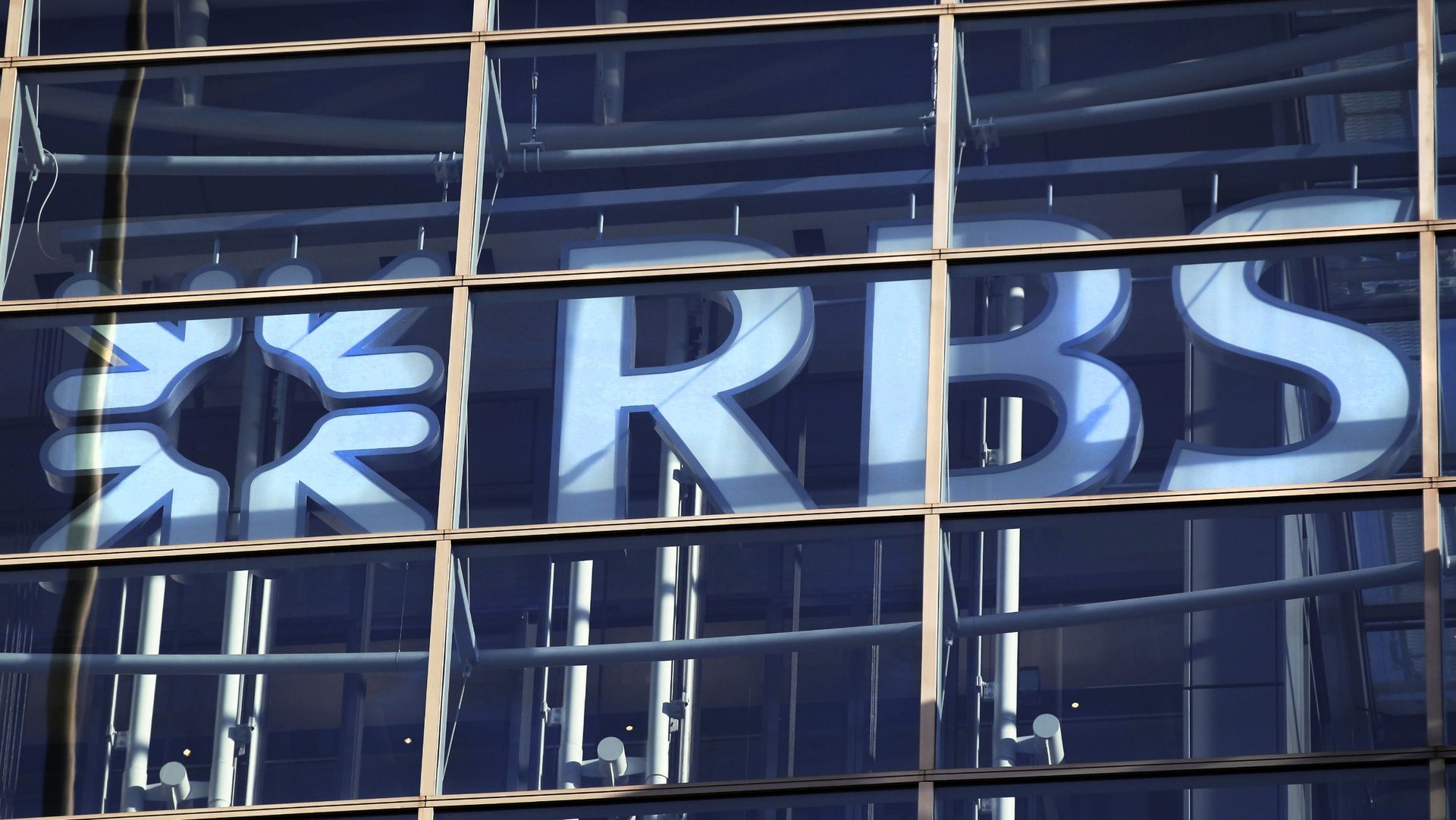RBS punishes its biggest money-maker for Libor scandal, but it won’t last
The Royal Bank of Scotland announced this morning that it would pay a total of $612 million in fines to the UK Financial Services Authority, the US Commodities Futures Trading Commission, and the US Department of Justice for its role in manipulating the London Interbank Offered Rate (Libor), one of the world’s most important financial benchmarks.


The Royal Bank of Scotland announced this morning that it would pay a total of $612 million in fines to the UK Financial Services Authority, the US Commodities Futures Trading Commission, and the US Department of Justice for its role in manipulating the London Interbank Offered Rate (Libor), one of the world’s most important financial benchmarks.
To pay for it, the bank will claw back some £300 million ($470 million) in bonuses from its employees, particularly those in the markets division, the group responsible for the offenses. The bank promised that those involved in the scandal would be disciplined, with all losing their bonuses and and others outright fired. And John Hourican, chief executive of the Markets and International Banking division, will leave the bank as a result of the scandal.
The shake-up today shows that RBS, like so many of its counterparts, is on the outs with an incredibly high-income division of its bank. But is it really? For the nine months ending Sept. 30, 2012 (pdf), RBS’s markets division raked in the highest income of any of its divisions. RBS’s revenues from its markets division accounted for 23.8% of its total income in that period, actually up from 15.3% in the same period the year earlier. Although RBS has cut workers from this division, the upshot is that it’s just making these divisions more profitable; the bank is doing more with less.
For all the hoopla, are banks really cutting down their trading divisions for the long term? Or will they eventually look with a more forgiving eye on the divisions that are giving them, in RBS’s case, a 12% return on equity? Money is money, after all, and we’re pretty sure that banks aren’t going to give that up lightly.